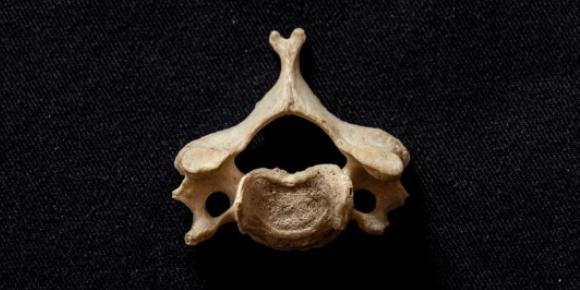
I hear it all the time from patients, friends, and family. “My disc slipped again”. Sometimes I correct the patient, but mostly I just try to forget about it. But, I felt that it was finally time to the issue to bed. Your disc doesn’t/can’t slip.
In order to understand why your disc doesn’t slip, you have to understand the anatomy of an intervertebral disc. Discs are a very special kind of connective tissue. They attach bone to bone-like ligaments. They also are able to absorb a lot of force. They are one of the reasons why our spine is flexible.

The easiest way to think of a disc is to imagine it is a jelly-filled donut. The inner, jelly part of a disc is called the nucleus pulposus. It is mostly water (one of the reasons why I want my patients to drink more water), mixed collagen fibers. It can compress and absorb forces from daily life. As we age, this jelly-like substance loses the ability to retain water as well, causing a decrease in the height of the disc and a very small decrease in the ability of it to carry a load. The amount of water in your disc also varies by the time of day because as the day goes on, gravity and pressure force a small amount of water out of the disc. So for most people with back pain, it's usually worse in the morning (more on that later).
The outer portion of the disc is called the annulus fibrosus. It is a ligamentous ring of tissue that contains the nucleus pulposus. The annulus is extremely tough, and it is made of multiple layers of collagen fibers which give its strength. This tissue connects the vertebrae above to the one below it and is very flexible.The annulus also has a blood supply and nerve supply (more on this later).
When it comes to disc-related pain there can be a lot going on. We’ll start with the most basic disc-related issue, disc bulges. Let’s get this out of the way first, bulges are a normal thing. It is supposed to happen as we get older. Pain from bulges is a little more complicated, but let’s go over what a bulge actually is. As a disc ages, you begin to see some normal age-related changes. Think wrinkles, gray hair, but similar changes happening within your disc. What begins to happen is the inner portion of the disc, the nucleus pulposus shrinks as its ability to retain water reduces. As a result, the outer layers of the annulus compress more and bulge outwards. The bulging is usually even over the entire disc but you don’t have any leakage of the nucleus from the disc. It can occasionally compress on nerves and other structures leading to pain. Generally, disc bulges are more painful in the morning because of the increased water content. As the day goes on, more water is extruded from the disc, reducing the pressure. A herniated disc is more complicated. It involves the nucleus pulposus being forced through the annulus fibers into the spinal canal. It is the more serious of the two but usually resolves over time.
This is just the basics of your disc and why it can cause pain. There are a lot of other factors that lead to pain. There's the fact that as the disc naturally ages, more pain-sensing nerve fibers grow into the disc, lowering the threshold to feel pain over time. Or as the movement in the region decreases, pain sensitivity increases. Even the disc material itself, once in the spinal canal, is inflammatory, setting off the release of all kinds of pain-related neurotransmitters.
Pain, especially back pain, is one of the most complex things to try and understand. Our discs are really complex systems. We didn’t even begin to address the core and how it affects your spine. For now, I want to leave you probably the most important thing I can tell you. YOUR BACK IS NOT FRAGILE. YOUR DISC IS NOT FRAGILE. Don’t be afraid to move, don’t be afraid to be active. If you want to learn more about your disc, or any question at all, don’t hesitate to reach out!
